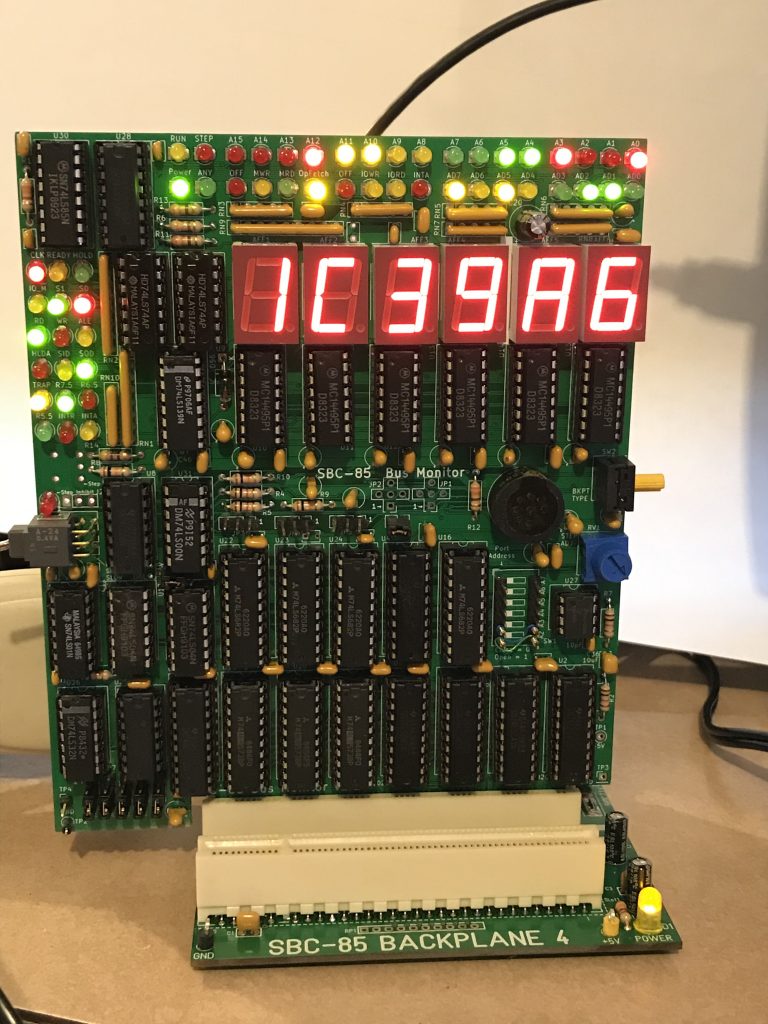- Craig Andrews
- Category Bus Monitor Supreme
I have been having a great deal of fun building and now testing version 1.1b of the bus monitor supreme. So far, there is only one tiny thing that annoys me that I plan on changing in the next version but overall I am extremely happy how the board turned out.
As a reminder, the bus monitor offers the following features:
- Binary and hexadecimal display of the address and data byte
- Binary display of all 8085 status and bus status and control lines
- Manual Single step
- Automatic slow step
- Bus cycle type filtering (memory read, memory write, opcode fetch, I/o output, I/o input, interrupt)
- Address match breakpoint
- Data byte match breakpoint
- Software control of step mode, step filter, and breakpoints
- Speaker
Some things I have done a cursory check, other things I have test and checked and checked and tested until I can test no more. The primary address and data displays (both binary and hexadecimal) are all working, I have not gotten around to testing some of the processor status LEDs like the hardware interrupts and a few other minor ones. The single step works including all of the bus cycle type filtering and slow step. Today I played with the address breakpoint and that works very well and is a powerful tool.
The upshot is I am about ready to release have released the build files for the bus monitor supreme v1.1b and finish off the documentation. I originally purchased 5 boards, have built one and, as of right now, have the other four sitting on my bench. These are oversized so the bare boards run $5 each plus a few dollars for shipping in the US. However, be warned that there is still an opportunity for a hardware bug to show up so I would prefer these go to individuals who accept that as a challenge rather than a disappointment.
So if you are interested in getting one of these please let me know via email in the footer or leave a comment on one of my youtube videos or hackaday.io project page.

